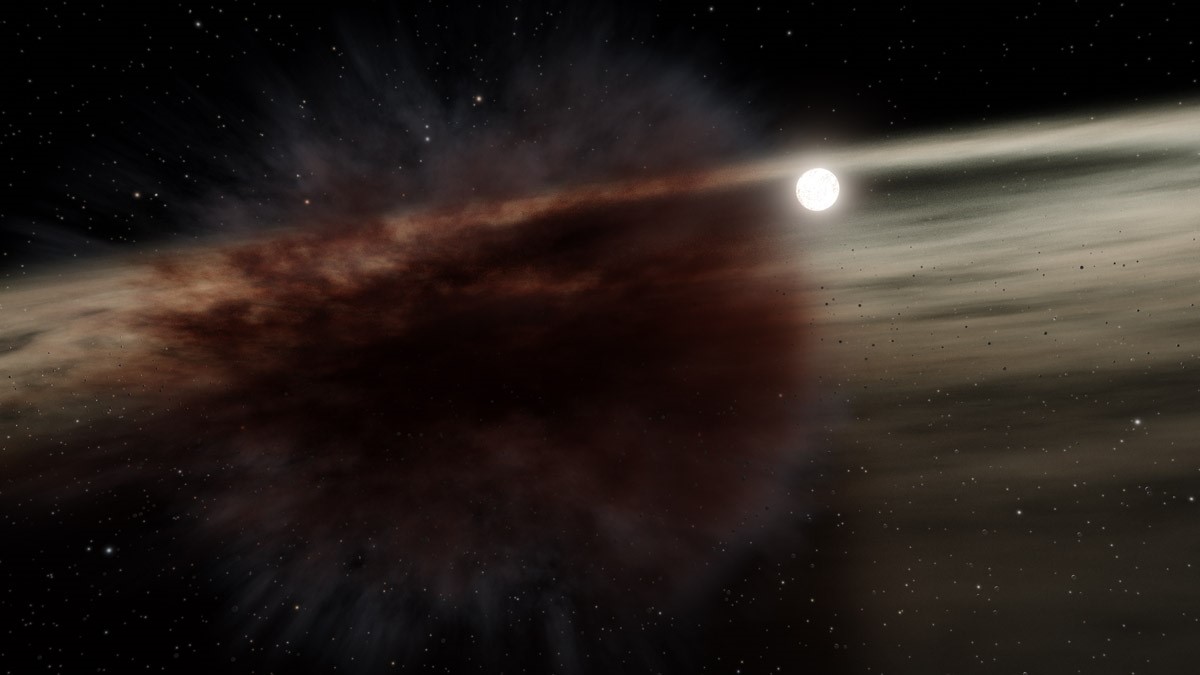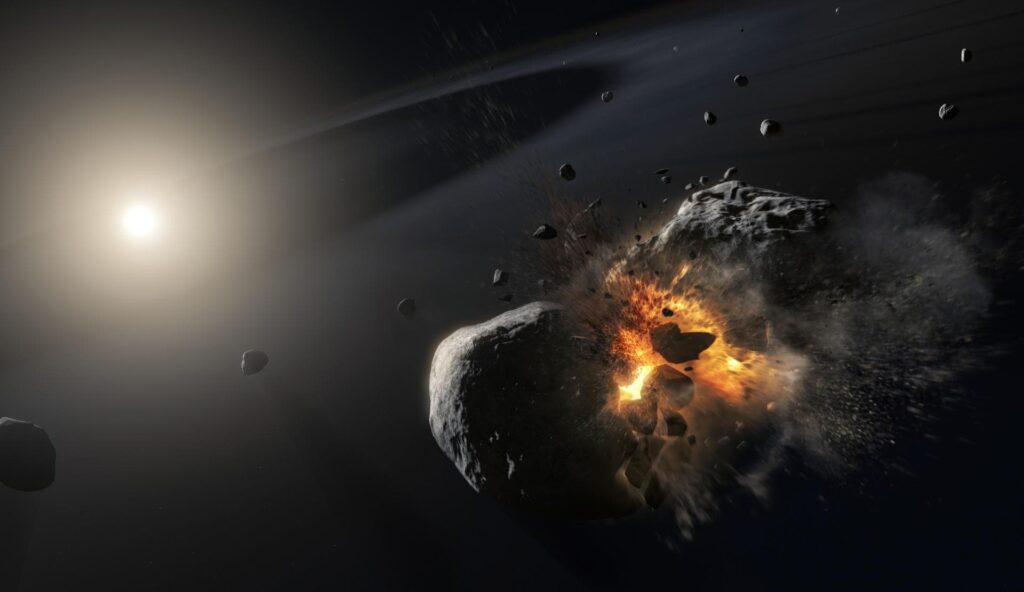Using data collected by the Spitzer infrared telescope, American astronomers discovered a giant cloud orbiting a young star. In their opinion, it was formed as a result of the collision of the embryos of the planets.

In the early years, there were several hundred planetary embryos in the Solar System. In the course of subsequent collisions, their size gradually increased, but their number decreased. As a result, only a part of objects that gave rise to the current planets of the Solar System survived.
According to astronomers, similar processes should occur in other young star systems. Previously, it was already possible to find signs of giant collisions, but the available data was insufficient to determine the characteristics of the objects involved in them.
Giant dust cloud
In a new study, a team of astronomers from the University of Arizona turned to data from the Spitzer telescope. Their choice fell on the young star HD 166191, which age is estimated to be 10 million years. At this stage, it should still be surrounded by numerous planetary embryos. The researchers suggested that If the luminaries are observed regularly, they will eventually show signs of collision.

The scientists’ calculation was confirmed. In mid-2018, the Spitzer telescope managed to record traces of a change in the brightness of HD 166191 caused by the transit of a huge dust cloud. During additional ground-based observations, astronomers were able to determine the characteristics of this cloud and then calculate the size of the object that produced it. The researchers concluded that it should have been formed with the involvement of an object with a diameter of about 530 km, comparable in size to the asteroid Vesta.
It should be noted that just a few months after the discovery, the dust cloud around HD 166191 began to dissipate. Already in 2019, astronomers could not record its traces.
According to https://www.nasa.gov

